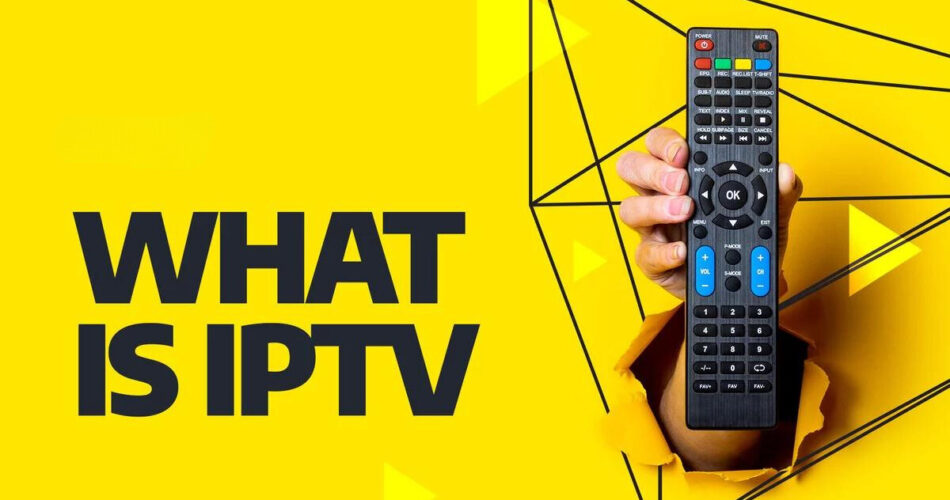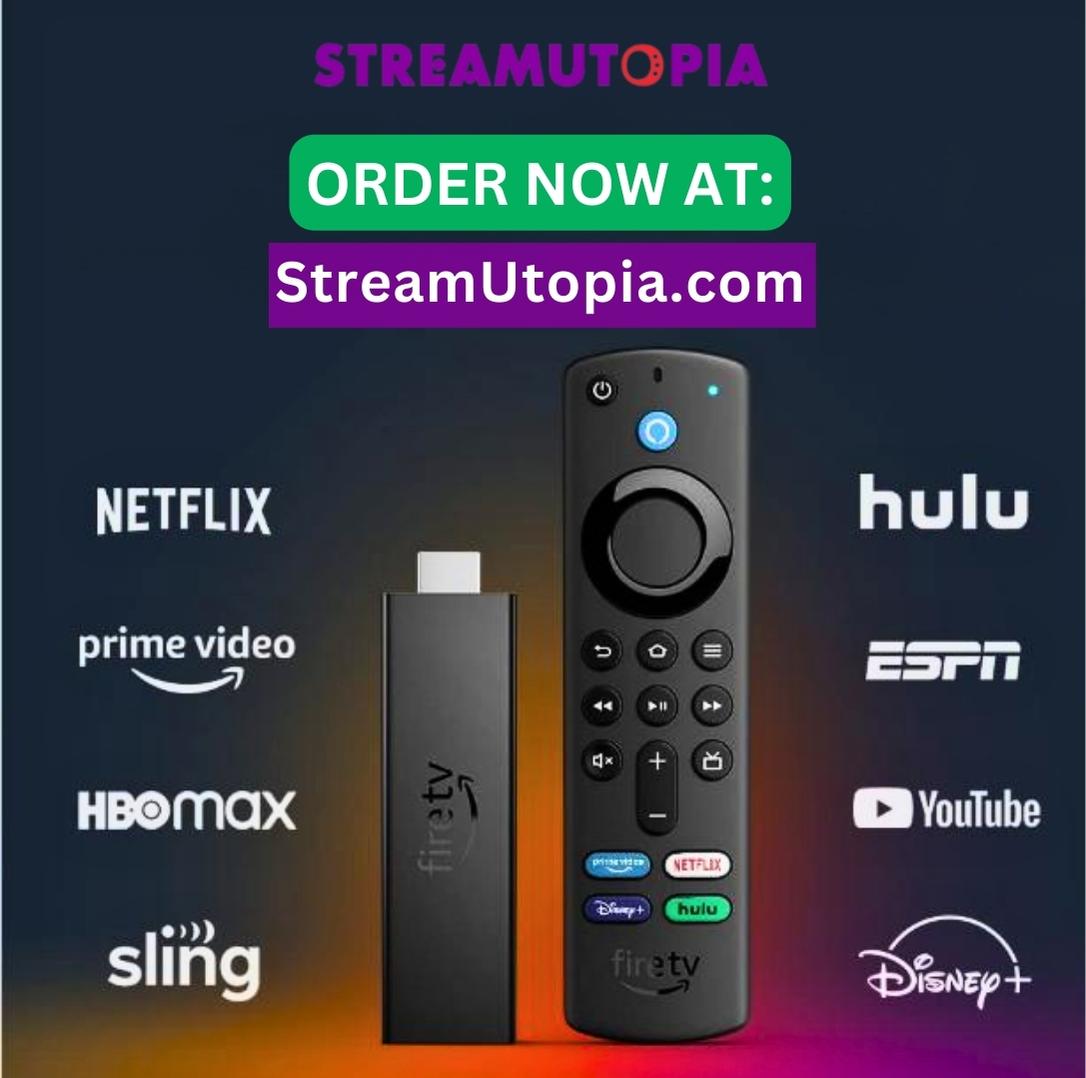Are you ready to unlock a whole new world of television? Curious about how television content is delivered over the internet? Look no further – this comprehensive guide will take you on a journey through the fascinating realm of IPTV (Internet Protocol Television).
Have you ever wondered how IPTV differs from traditional television? How it actually works? Or how to set it up on your device? We will answer these questions and more as we delve into the technology, services, providers, and future prospects of IPTV.
Prepare to be amazed by the possibilities of on-demand content, interactive features, and multi-device viewing. And don’t worry, we’ll also address the legal considerations associated with IPTV usage, ensuring you have all the information you need to enjoy IPTV in a responsible and legal manner.
So, are you ready to embark on this IPTV adventure? Let’s dive in and explore the world of Internet Protocol Television!

Key Takeaways:
- Discover what IPTV is and how it differs from traditional television.
- Gain an understanding of the technology behind IPTV and how it enables television content delivery over the internet.
- Learn about the different types of IPTV services available, including on-demand and live streaming options.
- Get step-by-step guidance on setting up IPTV on your device and tips for choosing a reliable IPTV provider.
- Explore the features, benefits, and future prospects of IPTV in the television industry.
What is IPTV?
In this section, we will explore the concept of IPTV (Internet Protocol Television) and its fundamental differences from traditional television. We will delve into the IPTV technology that allows the seamless delivery of television content over the internet.
“IPTV is an innovative solution that revolutionizes the way we consume television. By leveraging internet protocol technology, IPTV enables users to access their favorite shows, movies, and live streams anytime, anywhere, using a wide range of devices. It offers a personalized and interactive viewing experience, giving viewers more control over what they watch and when they watch it.”
Unlike traditional television, which relies on broadcast signals received through satellite or cable networks, IPTV uses internet protocol packets to transmit audio and video data directly to the viewer’s device. This technology allows for greater flexibility and scalability, as well as the ability to offer a wide variety of content options and interactive features.
With IPTV, viewers can enjoy on-demand access to their favorite shows and movies, eliminating the need to adhere to fixed broadcasting schedules. Additionally, the integration of IPTV with other internet-based services, such as video-on-demand platforms and interactive applications, further enhances the user experience.
To provide a better understanding of the IPTV technology, let’s take a closer look at the key components involved in the delivery of IPTV content:
Key Components of IPTV Technology
The IPTV technology ecosystem comprises several essential components that work together to facilitate the seamless transmission and playback of television content. These components include:
- IPTV Server: The central hub responsible for storing, managing, and distributing the TV content to viewers.
- Middleware: The software layer that bridges the gap between the IPTV server and various user devices, ensuring smooth and secure delivery of content.
- Set-Top Box (STB): A device that acts as an intermediary between the IPTV server and the user’s television, decoding the received signals and displaying them on the screen.
- Content Delivery Network (CDN): A geographically distributed network of servers that optimizes the transmission of audio and video data, ensuring a high-quality streaming experience.
- User Interface (UI): The graphical interface through which users interact with the IPTV service, accessing content, navigating menus, and managing settings.
*Insert Table Here*
How Does IPTV Work?
Understanding how IPTV works is essential to fully grasp its technology and streaming capabilities. IPTV, or Internet Protocol Television, utilizes IP networks to deliver television content to viewers through an internet connection. Unlike traditional broadcasting methods, which rely on satellite or cable signals, IPTV streaming allows for a more flexible and personalized viewing experience.
So, how does it all come together? The process begins when a user requests a specific TV program or video, whether it’s live TV, on-demand content, or recorded shows. The request is then sent over IP networks, which transmit data packets efficiently and securely to the viewer’s device.
Transmission Protocols and Components
During the delivery of IPTV content, several essential components and transmission protocols play a role:
- Internet Protocol (IP): The foundation of IPTV technology, IP allows for the packet-based transmission of data over networks.
- Transmission Control Protocol (TCP): TCP guarantees the secure and ordered delivery of data packets, ensuring a reliable viewing experience for users.
- User Datagram Protocol (UDP): While less reliable than TCP, UDP is utilized for real-time streaming, providing low-latency transmission suitable for live TV broadcasts and interactive applications.
- IPTV Middleware: IPTV middleware acts as the bridge between the content providers, network operators, and viewers. It enables access control, content management, and interactive features such as video-on-demand, electronic program guides, and more.
- Set-Top Box (STB) or Smart TV: These devices receive the IPTV signals and decode them into readable content for display on the viewer’s TV screen.
By leveraging these components and transmission protocols, IPTV enables a dynamic and personalized television viewing experience, giving users the ability to choose what and when they want to watch.
“IPTV provides a more flexible and personalized viewing experience by using IP networks to deliver television content.” – IPTV industry expert
Let’s take a closer look at how the IPTV streaming process unfolds:
Step Description 1 The user selects a channel or requests specific content, triggering a signal that is sent via the user’s internet connection. 2 The request is received by the IPTV provider’s server, which processes and retrieves the requested content from its extensive library. 3 The chosen content is encoded into a series of data packets and transmitted over IP networks to the user’s device. 4 The user’s device, whether it’s an IPTV set-top box or a Smart TV, receives the data packets and decodes them into a readable video/audio format. 5 The decoded content is then displayed on the user’s TV screen, providing an uninterrupted and high-quality viewing experience.
This seamless process ensures that viewers can access their desired content in real-time or at their convenience, enjoying an immersive IPTV streaming experience.
Types of IPTV Services
When it comes to IPTV, there are a variety of services available to cater to different viewing preferences. Whether you’re looking for free options, subscription-based services, or on-demand and live streaming channels, IPTV has something for everyone.
1. Free IPTV Services
If you’re looking to explore IPTV without committing to a subscription, free IPTV services are a great starting point. These services offer a limited selection of channels and content, but they can still provide access to popular shows, movies, and sports events.
2. Subscription-Based IPTV Services
For a more comprehensive IPTV experience, subscription-based services offer a wide range of channels and content. These services often provide access to premium channels, international programming, and exclusive on-demand content. Some popular subscription-based IPTV providers include:
Provider Channels Features Netflix 1000+ On-demand streaming, original content Hulu 85+ Live TV, on-demand streaming, original content Disney+ 1000+ Disney, Pixar, Marvel, and Star Wars content
3. On-Demand IPTV Services
On-demand IPTV services allow you to access a vast library of content, giving you the freedom to watch what you want, when you want. These services typically offer movies, TV shows, documentaries, and other video content that can be streamed instantly. Popular on-demand IPTV services include:
- Amazon Prime Video
- YouTube TV
- Apple TV+
4. Live Streaming IPTV Services
If you enjoy watching live sports, news, or events in real-time, live streaming IPTV services are the way to go. These services offer a wide array of channels that broadcast live content, allowing you to keep up with your favorite teams, catch breaking news, and stream live concerts or shows. Some popular live streaming IPTV services include:
- YouTube TV
- Sling TV
- FuboTV
With such a diverse range of IPTV services available, you can find options that suit your interests and preferences. Whether you prefer free content, a subscription-based service, on-demand streaming, or live TV, IPTV providers have you covered.
Setting Up IPTV
Setting up IPTV on your device is a straightforward process that requires a few key steps. In this section, we will guide you through the necessary software and hardware requirements, as well as provide tips on choosing a reliable IPTV provider. Follow these instructions to ensure a smooth and successful IPTV setup.
Software and Hardware Requirements
Before you begin setting up IPTV, make sure you have the following software and hardware requirements:
- Device: A compatible device such as a Smart TV, streaming box, or mobile device.
- Internet Connection: A stable internet connection with sufficient bandwidth for streaming.
- IPTV App: An IPTV app or player installed on your device to access and play IPTV streams.
- IPTV Subscription: An active subscription with an IPTV provider to access their streaming service.
Configuring Your IPTV Service
Once you have the necessary requirements in place, follow these steps to configure your IPTV service:
- Install the IPTV app or player on your device. Make sure to download it from a reputable source.
- Launch the IPTV app and navigate to the settings menu.
- Within the settings menu, locate the section where you can enter your IPTV provider’s details.
- Enter the necessary information, including your IPTV provider’s server address, username, and password.
- Save the settings and exit the menu.
- Once you are back on the home screen of the IPTV app, you should have access to your IPTV channels and content.
Tips for Choosing a Reliable IPTV Provider
When selecting an IPTV provider, consider the following tips to ensure a reliable and satisfying experience:
- Research different IPTV providers and read reviews from other users to gauge their reputation and service quality.
- Look for IPTV providers that offer a wide range of channels and content to suit your preferences.
- Check if the IPTV provider offers a trial period or money-back guarantee to test their service before committing.
- Verify that the IPTV provider has responsive customer support and provides prompt assistance in case of any issues.
- Consider the pricing plans and payment options offered by the IPTV provider, ensuring they align with your budget and convenience.
By following these steps and considering the tips mentioned, you can set up IPTV on your device and enjoy a wide variety of streaming content. Stay tuned for the next sections, where we will explore the features, benefits, and future prospects of IPTV.
IPTV Features and Benefits
When it comes to television entertainment, IPTV services offer a wide range of features and benefits that set them apart from traditional television. With IPTV streaming, viewers can enjoy on-demand access to content, interactive features, and the flexibility to watch their favorite shows on multiple devices.
Advantages of IPTV over Traditional Television
One of the key advantages of IPTV services is the ability to access a vast library of on-demand content. With IPTV providers, users can choose from a wide range of movies, TV shows, documentaries, and more, allowing them to watch what they want, when they want.
Furthermore, IPTV streaming offers interactive features that enhance the viewing experience. Viewers can pause, rewind, or fast forward through their favorite programs, ensuring they never miss a moment. Some IPTV providers even offer interactive menus, allowing users to browse through different channels and choose the content they want to watch.
Another benefit of IPTV services is the ability to watch TV on multiple devices. Whether it’s a Smart TV, smartphone, tablet, or computer, users can access their IPTV service and enjoy their favorite shows wherever they are. This flexibility provides convenience and ensures that viewers never have to miss an episode of their favorite series.
Comparison Table: IPTV vs. Traditional Television
| Features/Benefits | IPTV | Traditional Television |
|---|---|---|
| On-Demand Access | Available | Limited |
| Interactive Features | Available | Minimal |
| Multiple Device Compatibility | Available | Dependent on TV reception |
As the table shows, IPTV offers a superior viewing experience with on-demand access, interactive features, and compatibility across multiple devices. Traditional television, on the other hand, has limitations in terms of content availability, interactivity, and device compatibility.
Overall, IPTV services provide a more personalized and convenient television experience, giving viewers the freedom to watch what they want, when they want, and on the device of their choice.
The Future of IPTV
In this section, we will explore the exciting future of IPTV (Internet Protocol Television) and its impact on the television industry. As technology continues to advance, IPTV is poised to revolutionize the way we consume and interact with television content.
Emerging Technologies and Trends
One of the key areas of development in IPTV technology is the integration of IPTV with 5G networks. The ultra-fast speeds and low latency of 5G will enable seamless streaming of high-quality IPTV content, even in bandwidth-intensive applications such as 4K and virtual reality.
Additionally, the Internet of Things (IoT) is set to play a significant role in the future of IPTV. With the proliferation of smart devices, IPTV can be seamlessly integrated into the IoT ecosystem, allowing users to access and control television content from various devices throughout their homes.
The Power of IPTV Networks
IPTV networks have the potential to revolutionize the broadcasting industry by offering unmatched flexibility and customization. Unlike traditional television, where users are limited to predetermined schedules and channels, IPTV allows for personalized content selection and on-demand streaming.
Moreover, IPTV networks have the capability to provide interactive features that enhance the user experience. Features such as integrated social media, real-time audience engagement, and personalized recommendations make IPTV a truly immersive and engaging form of entertainment.
The Global Impact
IPTV’s influence extends beyond individual viewers and into the global market. With the ubiquity of internet connectivity, IPTV allows for the seamless distribution of television content across different geographical regions. This opens up new opportunities for content creators, distributors, and advertisers to reach a global audience and expand their viewership.
The Future is Bright for IPTV
As technology continues to evolve, IPTV is set to become even more prevalent and integrated into our daily lives. With advancements in network infrastructure, emerging technologies, and the demand for personalized streaming experiences, IPTV is poised to shape the future of television.
Benefits of IPTV Challenges of IPTV
Legal Considerations for IPTV
Using IPTV services offers a vast array of entertainment options, but it’s important to be aware of the legal considerations surrounding this technology. To ensure that you are accessing IPTV content legally and from reputable sources, it is essential to understand the copyright issues and piracy concerns associated with IPTV services.
Copyright Issues
When accessing IPTV services, it’s crucial to respect copyright laws. Content creators have the exclusive rights to their creations, and unauthorized distribution or reproduction of copyrighted material is illegal. IPTV services provide access to a wide range of TV shows, movies, and other content, so it’s essential to ensure that the service you choose has obtained the necessary licensing agreements.
Remember that pirated content is not only illegal but also undermines the rights and revenues of content creators. Always support the creators by accessing content through legal IPTV providers.
Piracy Concerns
Piracy remains a significant concern in the world of IPTV. Illegitimate IPTV providers may offer access to premium channels and content without the necessary permissions or licenses. By using these illegal services, you are supporting unauthorized distribution and potentially exposing yourself to legal repercussions.
It’s crucial to be cautious when choosing an IPTV provider and ensure that they have the proper agreements in place with content creators. Reputable providers prioritize legality and take the necessary steps to protect their customers from piracy-related issues.
Accessing IPTV Content Legally
To ensure that you are accessing IPTV content legally and from reputable sources, here are some steps you can take:
- Research IPTV providers: Look for providers that have established partnerships with content creators and have obtained the necessary licensing agreements.
- Read user reviews: Check what other users are saying about the IPTV provider you are considering. Positive reviews can indicate that the provider is trustworthy and offers legal content.
- Avoid suspiciously low-priced or free services: Beware of providers offering extremely low prices or free access to premium content. Such services often rely on pirated content and may violate copyright laws.
- Use official apps and platforms: Stick to using official apps and platforms recommended by the IPTV provider to ensure that you are accessing content legally and securely.
By being aware of the legal considerations associated with IPTV services and making informed choices, you can enjoy the vast array of content available through legitimate IPTV providers without compromising legality or supporting piracy.
IPTV vs. Traditional Television
In today’s digital age, viewers have more options than ever when it comes to accessing television content. While traditional television has been the go-to choice for decades, IPTV services have emerged as a popular alternative. In this section, we will compare IPTV with traditional television, exploring the advantages and disadvantages of each.
Cost
One of the key factors that sets IPTV apart from traditional television is cost. IPTV services often offer more affordable options compared to cable or satellite subscriptions. With IPTV, users can choose from various pricing tiers that cater to their needs and budget, eliminating the need for expensive equipment or long-term contracts.
In contrast, traditional television providers typically require costly equipment and monthly subscription fees, which can add up over time. Additionally, bundled packages that include channels and services users may not need can further inflate costs.
Channel Selection
When it comes to channel selection, IPTV services offer a wide range of options. From local and international channels to niche content and on-demand libraries, IPTV provides a diverse array of channels to cater to specific interests and preferences.
On the other hand, traditional television often provides a predetermined lineup of channels based on the chosen package. While cable and satellite providers offer a broader selection compared to basic network television, the options may still be limited in comparison to the extensive offerings of IPTV services.
Picture Quality
IPTV services, taking advantage of the internet and advanced streaming technologies, generally deliver high-definition (HD) and even ultra-high-definition (UHD) picture quality. The availability of high-speed internet connections allows for smooth streaming and crisp visuals, enhancing the overall viewing experience.
In contrast, traditional television relies on broadcasting signals that may face limitations in terms of picture quality, especially for viewers in areas with weak reception. While cable and satellite providers have improved their picture quality in recent years, they may not match the consistent and high-quality streaming experience of IPTV services.
User Experience
IPTV services offer a user-friendly and personalized viewing experience. With interactive features, intuitive interfaces, and the ability to customize channel lists and preferences, IPTV allows users to tailor their entertainment to their liking. Additionally, viewers can enjoy IPTV services on multiple devices, including smartphones, tablets, and smart TVs, providing flexibility and convenience.
On the other hand, traditional television may lack the interactive capabilities and customization options offered by IPTV services. The viewing experience is often limited to the programming schedule determined by the provider, with less control and flexibility for the viewer.
It’s important to note that both IPTV and traditional television have their own merits and drawbacks. The choice between the two ultimately depends on individual preferences, budget constraints, and desired features.
Major Players in the IPTV Industry
In the ever-expanding world of IPTV, several providers have established themselves as major players in the industry. These companies offer a wide range of IPTV streaming services and channels, catering to different regions and audiences. Let’s take a closer look at some of the top IPTV providers:
- 1. Amazon Prime Video: Known for its vast library of on-demand content, Amazon Prime Video also offers live TV streaming through its IPTV service. With a subscription to Amazon Prime, users gain access to a variety of IPTV channels and exclusive original shows.
- 2. Hulu Live TV: Hulu Live TV offers a comprehensive IPTV streaming experience, giving users access to a wide range of live TV channels, including sports, news, and entertainment. Users can also enjoy on-demand content from the extensive Hulu streaming library.
- 3. Sling TV: As one of the pioneers in the IPTV industry, Sling TV offers flexible streaming plans, allowing users to create their own channel lineup. With Sling TV, viewers can stream live TV and enjoy on-demand content from popular networks.
- 4. YouTube TV: YouTube TV provides subscribers with access to various live TV channels, including major networks and sports channels. It also offers unlimited cloud DVR storage, allowing users to record and stream their favorite shows at their convenience.
These are just a few examples of the many IPTV providers available today. It’s important to note that each provider may offer different packages, pricing, and channel selections. When choosing an IPTV provider, consider your viewing preferences, budget, and the channels you desire. Many providers offer free trials, so you can test their services before committing to a subscription.
International Channels on IPTV Platforms
IPTV platforms also provide access to international channels, catering to a diverse range of viewers. Whether you’re interested in catching up on news from your home country or exploring new cultures through international programming, IPTV has you covered. Many IPTV providers offer dedicated packages or add-ons for international channels, making it easy to find the content you crave.
Here’s a table highlighting some popular international channels available on IPTV platforms:
Channel Name Region Language Genre CCTV-4 China Chinese News, Entertainment MBC 1 Middle East Arabic Entertainment, Drama EuroNews Europe Multiple Languages News Zee TV India Hindi Entertainment, Bollywood TV5 Monde France French News, Culture
These are just a few examples of the diverse range of international channels available on IPTV platforms. With such extensive offerings, IPTV allows viewers to explore content from around the world, providing a truly global viewing experience.
Exploring IPTV Applications and Devices
When it comes to accessing IPTV services and streaming your favorite content, there are various applications and devices available. Let’s take a closer look at some popular IPTV apps and compatible devices that support IPTV streaming.
Popular IPTV Apps
One of the highly regarded IPTV apps is Smart IPTV. This app provides a user-friendly interface and allows you to stream IPTV channels and on-demand content. With Smart IPTV, you can easily navigate through different categories and enjoy your favorite shows, movies, and sports events.
Another notable IPTV app is IPTV Smarters. This app offers a seamless streaming experience and supports a wide range of IPTV services. With IPTV Smarters, you can access live TV, catch-up TV, and video-on-demand content.
Other popular IPTV apps worth exploring include GSE Smart IPTV, Perfect Player, and TiviMate. Each app has its own unique features and functionalities, catering to different preferences and needs.
Compatible Devices
IPTV services can be accessed on various devices to enhance your streaming experience. One of the most common devices is a Smart TV. These internet-enabled televisions come with built-in IPTV apps or allow you to download them from an app store. With a Smart TV, you can enjoy IPTV streaming directly on the big screen.
If you don’t have a Smart TV, you can opt for streaming boxes or devices such as Roku, Apple TV, or Amazon Fire TV Stick. These devices offer dedicated IPTV apps and support a wide range of streaming services, including IPTV.
Mobile devices, such as smartphones and tablets, are also compatible with IPTV apps. You can download the IPTV app of your choice from the respective app store and enjoy IPTV streaming on the go.
Device Benefits Smart TVs Large screen, built-in IPTV apps Streaming Boxes (Roku, Apple TV, Amazon Fire TV Stick) Dedicated IPTV apps, a wide range of streaming services Mobile Devices (Smartphones, Tablets) Portable, enjoy IPTV streaming on the go
Choosing the right application and device for your IPTV streaming needs is essential to achieve a seamless and enjoyable viewing experience. Consider your preferences, budget, and the features offered by different apps and devices before making a decision.
Conclusion
In conclusion, this comprehensive guide has provided you with a deep understanding of IPTV (Internet Protocol Television). You have learned about the technology behind IPTV, how it works, and the various types of services and providers available. Armed with this knowledge, you can now make informed decisions about IPTV, exploring the wide range of television content available over the internet.
Understanding IPTV opens up a world of possibilities for your entertainment needs. With IPTV, you can enjoy on-demand access to your favorite shows and movies, interactive features, and the flexibility to watch your content on multiple devices. Whether you prefer live streaming or on-demand options, IPTV services offer a comprehensive range of channels and content to suit your preferences.
Looking ahead, the future of IPTV looks promising. The integration of IPTV with emerging technologies like 5G networks and the Internet of Things (IoT) will further enhance the television viewing experience. As IPTV continues to evolve, new features and innovations will shape the industry, providing even more convenience and flexibility for users.
In summary, IPTV is revolutionizing the way we consume television content. By understanding IPTV, you have the knowledge and tools to explore the vast world of internet TV. So, embrace the convenience, choices, and possibilities of IPTV, and enjoy a new level of entertainment at your fingertips.
FAQ
What is IPTV?
How does IPTV work?
What are the types of IPTV services?
How can I set up IPTV?
What are the features and benefits of IPTV?
What is the future of IPTV?
What legal considerations should I be aware of when using IPTV?
How does IPTV compare to traditional television?
Who are the major players in the IPTV industry?
What applications and devices support IPTV?
Where can I find more information about IPTV?






